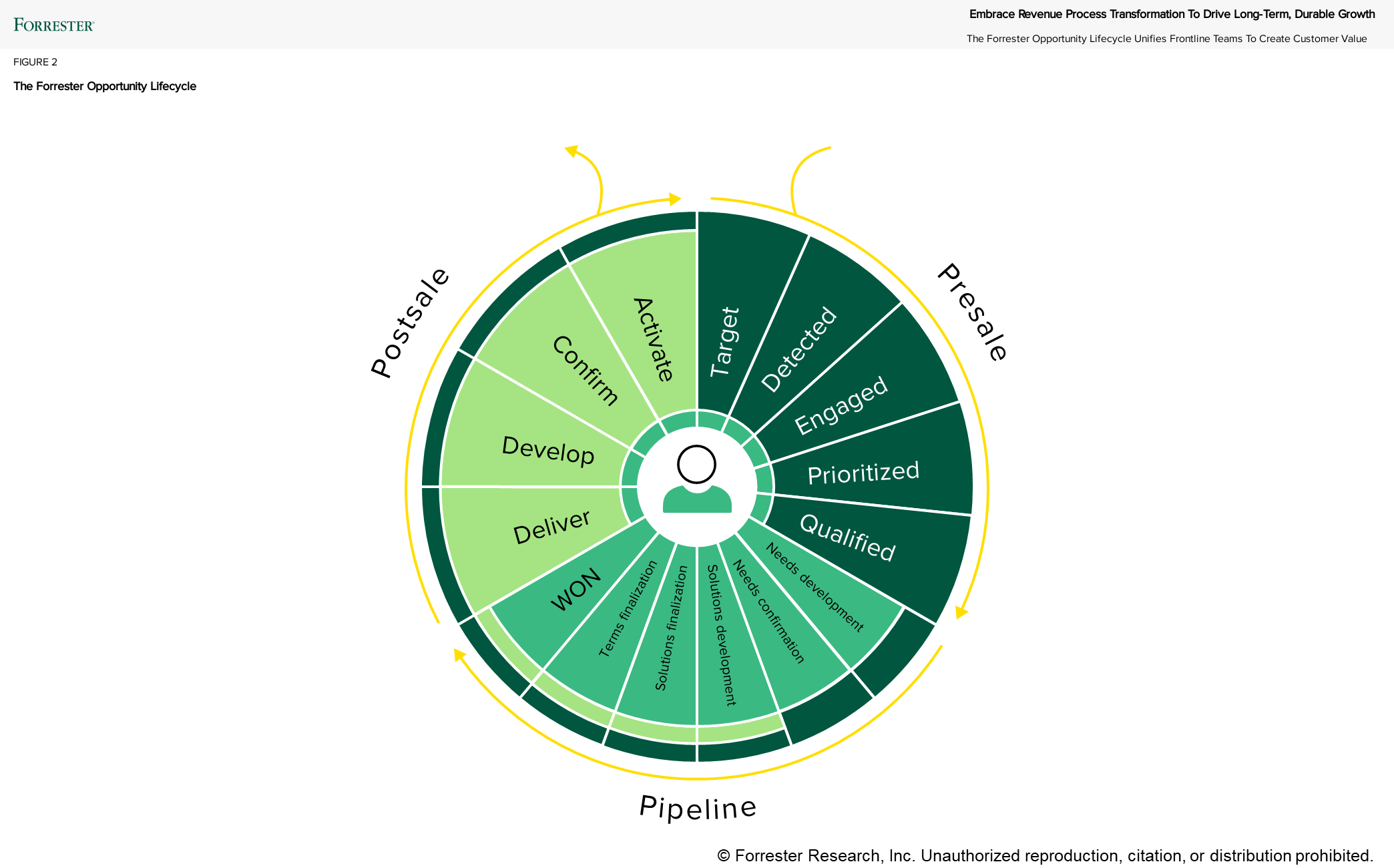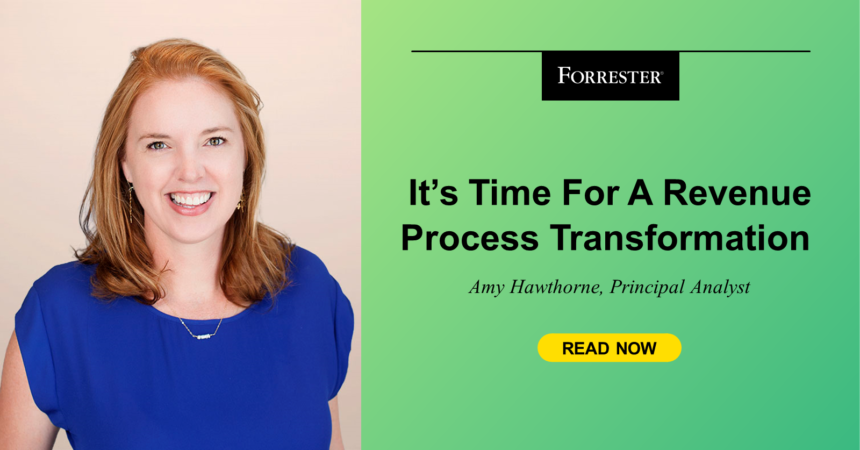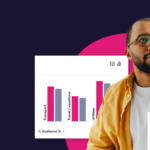Many marketers and sellers believe that they’re building windows into their customers by carefully constructing personas and ideal customer profiles. But these “windows” quickly turn into mirrors once they’re paired with familiar, inward-focused processes and tactics reflective of marketers’ and sellers’ own beliefs and goals. Organizations that continue sticking with this pattern, unwilling to break old habits, will continue to struggle.
We know that buyers have all the control of the revenue process. They decide when, if ever, they will speak with someone on your team. To grow, companies must align their ways of working with their buyers and customers and prioritize delivering value at every step of the journey, from the very first interaction to after they’ve begun using your product or service. This takes alignment between marketing, sales, and customer success, but even more is required.
At Forrester’s B2B Summit North America, my colleague Rick Bradberry and I were excited to introduce the Forrester Opportunity Lifecycle, a holistic “vendor view” of the customer lifecycle that illustrates the steps that marketing, sales, and customer success teams take as they engage with buyers throughout the different stages. The Forrester Opportunity Lifecycle provides a framework for B2B organizations to transform their revenue process to maximize buyer value.

The Opportunity Lifecycle is based on the steps required for revenue process transformation:
- Sharing signals and creating a common view of the customer are the keys to success. Every interaction with the members of a buying group produces signals that provide insight into their unique journeys, including their role, solution of interest, status, and more. Understanding the context of these signals helps drive the next best experience for the customer. Providers must gather these signals into a unified view of the customer and share that across marketing, sales, and customer success to ensure that all are creating consistent and coordinated interactions.
- Adopting opportunities and buying groups is imperative. “Marketing-qualified leads” (MQLs) is an outdated concept that more accurately reflected the state of marketing technology 20 years ago. The modern concept of an “opportunity” is the most accurate view of what the vendor is doing to support a customer’s buying decision. Opportunities align to solutions and revenue, are used as the “system of record” in sales to manage progress with a prospect or customer, and can be associated with multiple contacts. This makes an opportunity the perfect container to aggregate all insight about the buying group looking for a new solution.
- Marketing, sales, and customer success shouldn’t be locked into separate lanes with linear process flows. Historically, the revenue process has been constrained by a siloed approach in which marketing, RDRs (BDRs/SDRs), sales, and customer success work in mutually exclusive phases of the lifecycle and toward disconnected, individual goals. It shouldn’t be possible for marketing to exceed its MQL goal when the company misses its revenue target, but we see this all the time. Organizations must create shared, customer-aligned goals and metrics to reflect the new reality that all frontline teams play a role in engaging with prospects and customers.
The opportunity lifecycle and the customer lifecycle are really two sides of the same coin. The presale, pipeline, and postsale phases of the opportunity lifecycle mirror the buyer process of researching, buying, and implementing a solution. But the buyer and the selling organization don’t move in lockstep. Buyers move at their own pace, with various members of the buying group engaging at different times for different purposes and with different goals. Marketing, sales, and customer success teams all must be ready to engage and enable buyers when they are the team best able to create the experience that will help the buying group realize the maximum value in that moment.
Ready to learn more? Register for the webinar, Drive Long-Term Growth With A Customer-Centric Revenue Transformation, Tuesday, June 25, at 11 a.m. EDT. And get ready to build true windows into customers, not mirrors of your own preconceptions and approaches.








